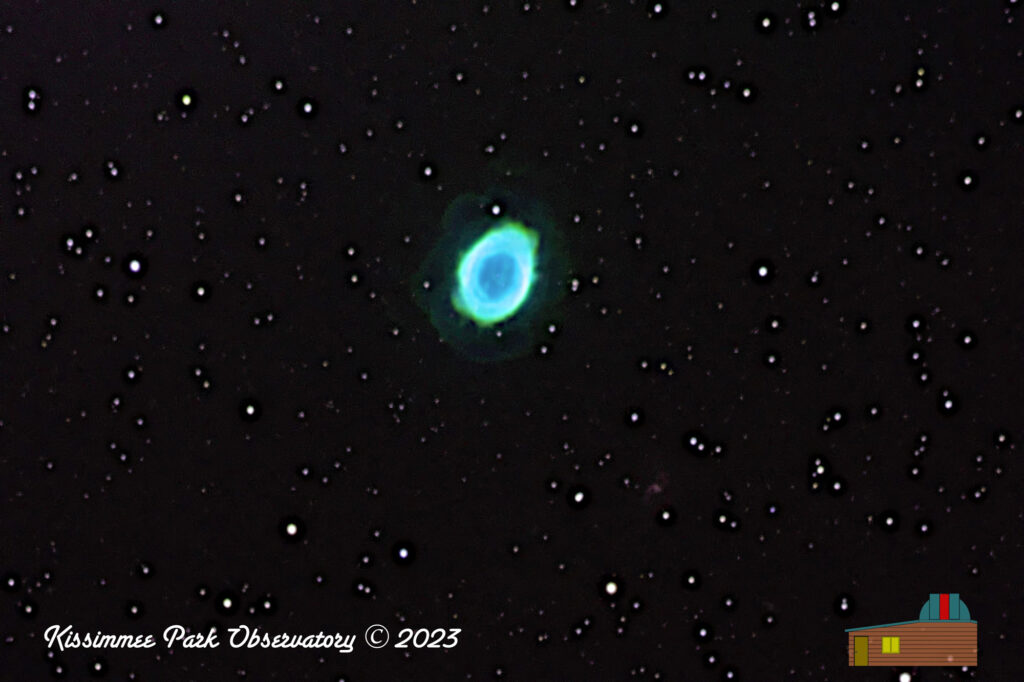The Ring Nebula, also known as Messier 57 or M57, stands as a true celestial gem. Located approximately 2,000 light-years away in the constellation Lyra, this nebula has captured the imagination of astronomers and stargazers for centuries.
The Ring Nebula was born from the remnants of a dying star, a process known as a planetary nebula. Once a sun-like star exhausts its nuclear fuel, it undergoes a series of transformative stages, shedding its outer layers and revealing its core. The intense radiation and stellar winds emitted during this process create the mesmerizing structure we observe today.
At the heart of the Ring Nebula lies a white dwarf—a dense, hot remnant of the former star. Surrounding it is a vibrant ring of glowing gas, stretching across tens of thousands of astronomical units. This distinctive shape has captivated astronomers, inspiring its name. However, recent observations have unveiled that the ring is not perfectly circular, but rather an irregular, complex structure.
Studying the Ring Nebula provides invaluable insights into the final stages of a star’s life. By analyzing its intricate structure and the elements present within it, astronomers can unravel the secrets of stellar evolution and the recycling of matter in the universe. It serves as a cosmic time capsule, preserving the legacy of a star’s journey through space and time.
The advent of advanced telescopes and imaging techniques has allowed us to peer deeper into the Ring Nebula’s core. High-resolution observations have revealed intricate details, unveiling faint outer shells and jets of material ejected by the central star. These discoveries spark new questions about the mechanisms driving these phenomena and the dynamics of planetary nebulae as a whole.
The Ring Nebula’s captivating beauty and scientific significance continue to inspire astronomers and researchers worldwide. By studying M57 and other planetary nebulae, scientists hope to gain a deeper understanding of stellar evolution, the fate of our own Sun, and the broader processes shaping our universe.
As we gaze upon the celestial splendor of the Ring Nebula, we are reminded of the grandeur and complexity of the cosmos. It serves as a testament to the profound processes occurring in the vastness of space. The Ring Nebula invites us to ponder the life cycles of stars, the recycling of matter, and the awe-inspiring beauty that lies beyond our planet. Let us continue to explore, learn, and marvel at the wonders of our universe, guided by the eternal mysteries of the Ring Nebula.
Click on the image to view a larger version you can explore.
Image Info
- Imaged from the KPO field, in Saint Cloud, Florida
- Camera : ZWO ASI1600MM Pro
- Scope: Orion RC-12 Ritchey-Chretien Astrograph, 2450mm fl, F/8
- Mount: iOptron CEM-120
- Hydrogen Alpha: 60 subframes of 60s = 60 min integration
- Oxygen III: 72 subframes of 60s = 72 min integration
- Sulphur II: 60 subframes of 60s = 60 min integration
- Total integration time: 560 min = 3.2 hours.
- Captured via ASIAir Pro automation
- Optical tracking via ASIAir automation via the ASI120MM-S guide camera
- Separate channels stacked and SHO integrated in Astro Pixel Processor
- Image run through Super DeNoising
- Final processing in Aperture

